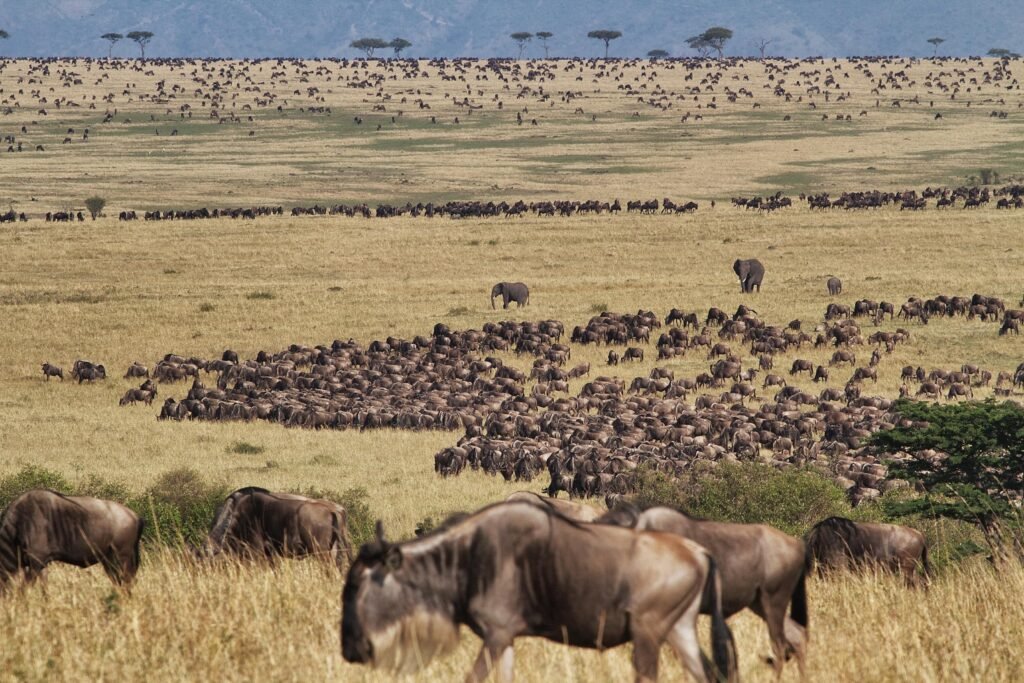
Serengeti National Park
Serengeti National Park in Tanzania is a world-renowned wilderness, synonymous with the awe-inspiring Great Wildebeest Migration and exceptional year-round wildlife viewing. Its vast, endless plains are home to an incredible diversity of animals, including the “Big Five,” offering an unparalleled safari experience that captures the raw essence of Africa.
Location
Discover the Legendary Serengeti National Park: Where the Plains Meet the Wild
The very name “Serengeti” conjures images of boundless plains, endless skies, and the raw, untamed essence of Africa. As Tanzania’s oldest and most iconic national park, covering an immense area of approximately 14,763 square kilometers (5,700 sq mi), the Serengeti National Park is a UNESCO World Heritage Site and globally recognized for its unparalleled wildlife spectacle and breathtaking natural beauty. Its name, derived from the Maasai word “Siringet,” truly means “the place where the land runs forever,” a fitting description for its vast, rolling savannahs.
At the heart of the Serengeti’s allure is the Great Wildebeest Migration, an awe-inspiring annual phenomenon often dubbed “the greatest show on Earth.” Over 1.5 million wildebeest, accompanied by hundreds of thousands of zebras and gazelles, embark on a continuous, instinct-driven journey across the Serengeti-Mara ecosystem in search of fresh grazing and water. This epic circular trek, spanning thousands of kilometers, involves dramatic river crossings, intense predator-prey interactions, and the constant cycle of birth and survival. Depending on the time of year, guests can witness the calving season in the southern plains (January-March), the perilous Grumeti River crossings in the Western Corridor (May-July), or the equally dramatic Mara River crossings in the north (July-October), as the herds push towards Kenya’s Maasai Mara before returning south.
Beyond the migration, the Serengeti is a year-round safari destination boasting an incredibly high concentration of resident wildlife. It is arguably the best place in Africa to witness the Big Five – lion, leopard, elephant, rhino (though black rhinos are rare and elusive), and buffalo. The park is home to one of the largest lion populations on the continent, with prides frequently seen lounging on granite outcrops known as “kopjes” or actively hunting. Leopards are often spotted gracefully draped over tree branches along the Seronera River, while cheetahs patrol the open plains, their speed a blur in pursuit of gazelle.
The diverse landscapes of the Serengeti contribute to its rich biodiversity. The Seronera Valley in the central region, characterized by its classic savannah and kopjes, serves as a vital hub for wildlife due to its permanent water sources. The Western Corridor is defined by the Grumeti and Mbalageti Rivers, featuring more dense riverine forests and attracting the migration during specific months. The Northern Serengeti, a more remote and hilly area, extends to the Kenyan border and is famous for the Mara River crossings. Each region offers unique habitats, supporting a wide array of plains game including topi, eland, impala, and Grant’s gazelles, as well as a rich birdlife of over 500 species, from ostriches to various raptors and colourful passerines.
Activities in the Serengeti primarily revolve around game drives in specially adapted 4×4 vehicles, allowing for close-up encounters with wildlife. For a truly unforgettable experience, a hot air balloon safari at dawn offers a spectacular aerial perspective of the endless plains, followed by a champagne breakfast in the bush. Some exclusive camps also offer walking safaris or night game drives (where permitted), providing different vantage points and opportunities to discover nocturnal animals.
Whether it’s the thundering hooves of the Great Migration, the sight of a lion pride on the hunt, or simply the serene beauty of a sunrise over the endless plains, Serengeti National Park promises an unparalleled and deeply immersive connection with the wild heart of Africa, creating memories that resonate long after you’ve returned home.
Gallery
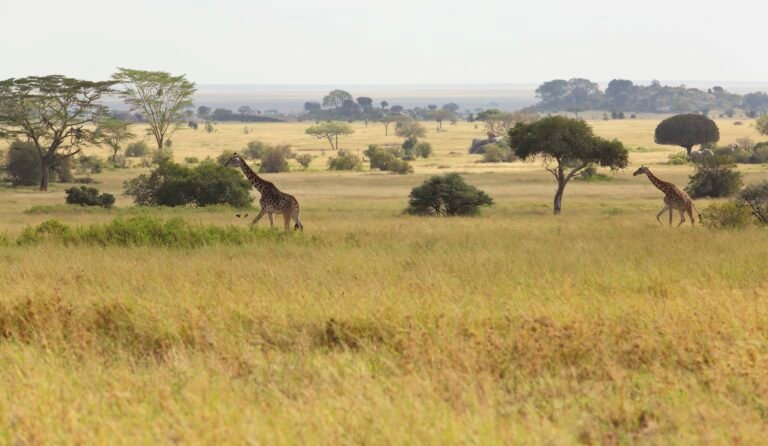
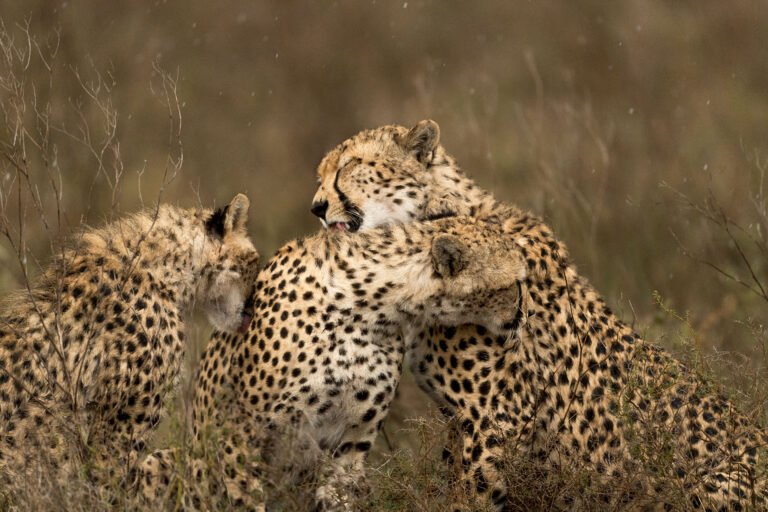
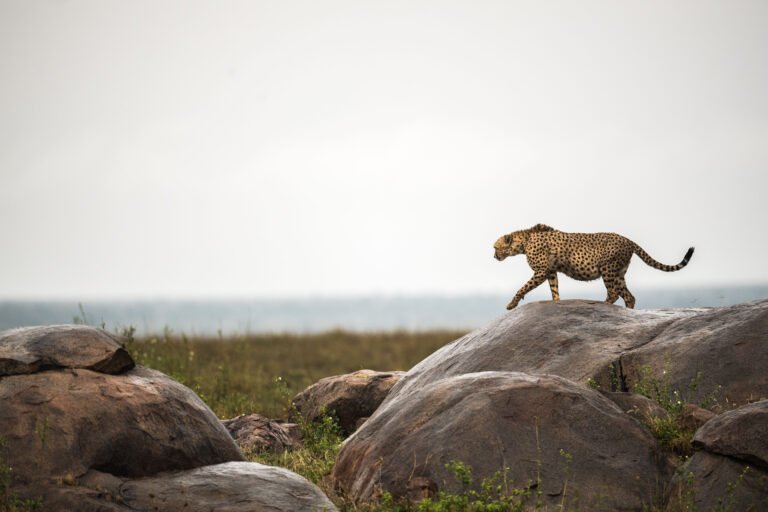
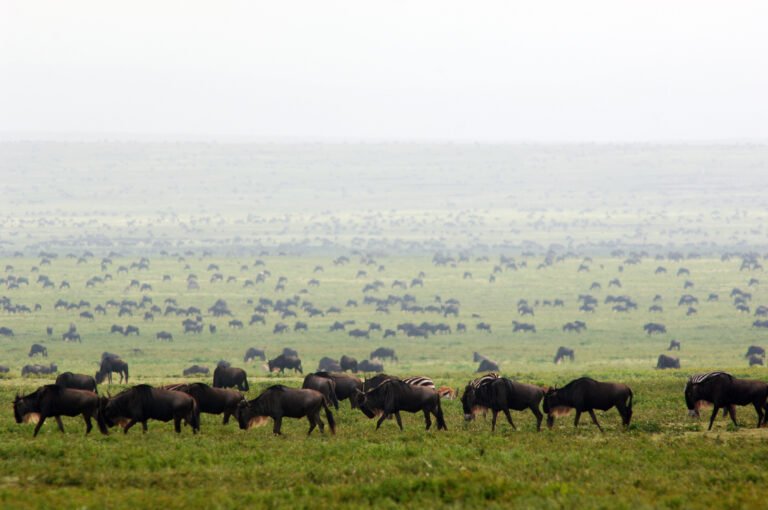
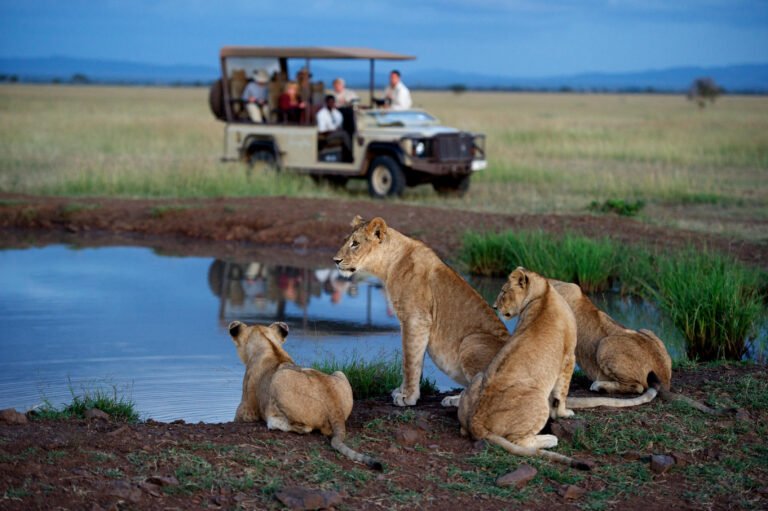

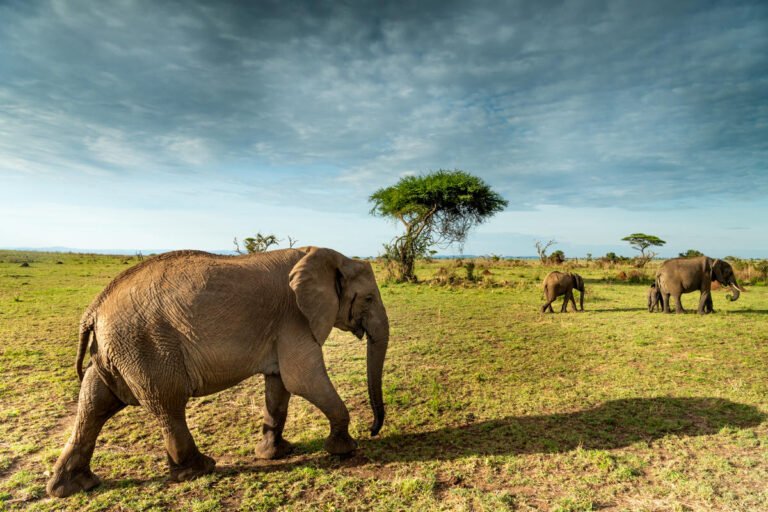
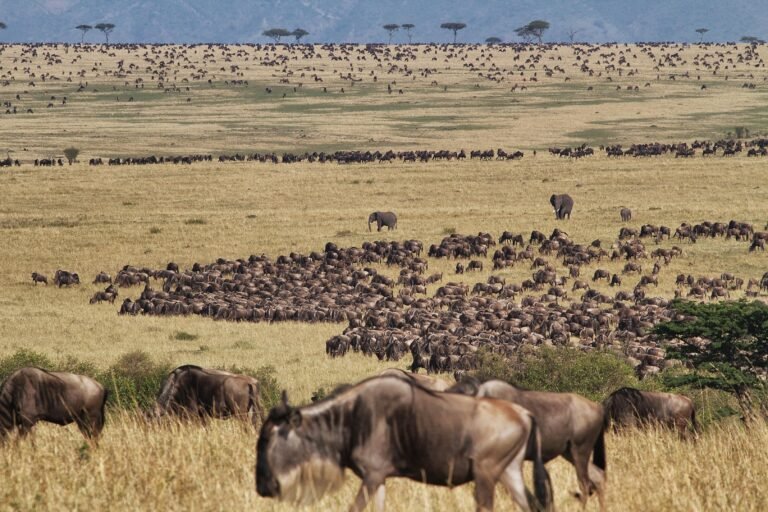
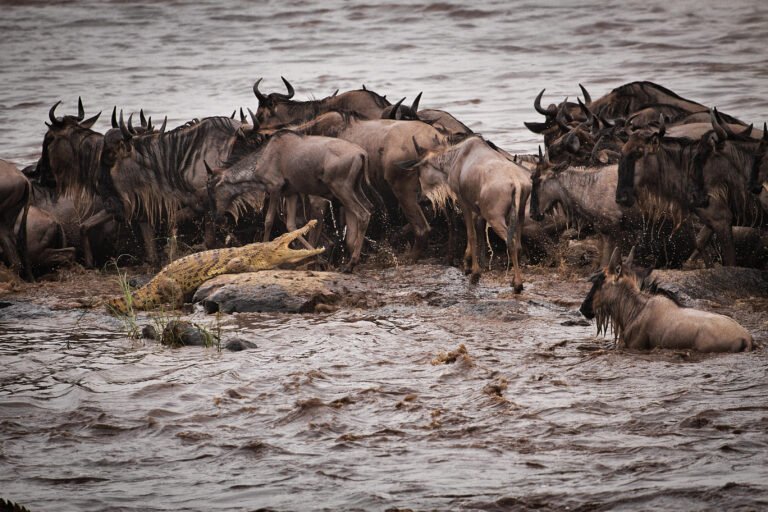
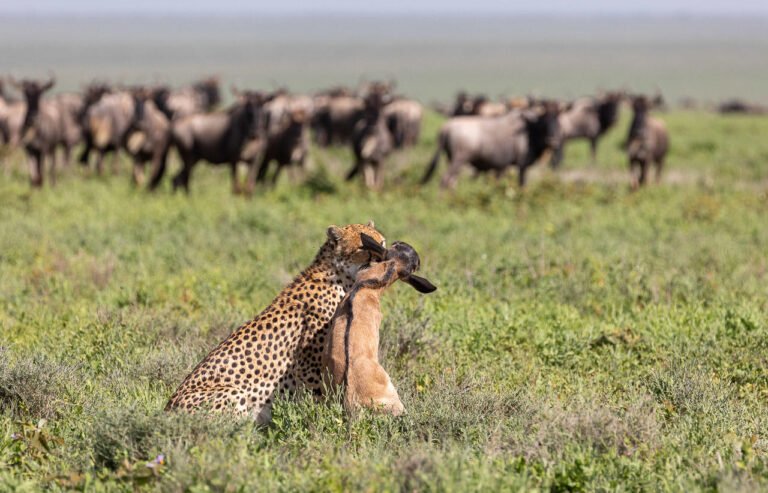
EXCELLENTTrustindex verifies that the original source of the review is Google. Ich war anfangs skeptisch gegenüber der Idee, den ganzen Tag im Auto zu verbringen, um die Natur zu erkunden. Doch die Möglichkeit, das Dach des Autos hochzuklappen und im Auto stehen zu können, verlieh mir das Gefühl, draußen zu sein. Das Beobachten der Tiere, die ich bisher nur aus Zoos kannte, erfüllte mich mit kindlicher Freude. Die dreitägige Safari nach Tanagiri, Lake Manyara und dem Ngorongoron-Krater war eine unvergessliche Erfahrung. Ich konnte Elefanten, Zebras, Löwen, Flamingos, Giraffen und viele weitere Tiere hautnah erleben. Es hat sich definitiv gelohnt.Posted onTrustindex verifies that the original source of the review is Google. Baraka, the owner of the company, is a very heartful person, good organizer and helpful for any kind of needs. He is the person that can connect western people with african culture and mindset. If you wanna go on any kind of safari, we can fully recommend him, To go on Safari is a stunning experience by itself, but to go with Baraka it's even more than that, you will find a true friend!Posted onTrustindex verifies that the original source of the review is Google. I am Nguyen Viet Nghi come from Vietnam, I has joined a tours Safari for 3 days through 3 National parks. It was wobderfull time for me to see widelife animals playing under sunshine. SAFARI has very great services for tourPosted onTrustindex verifies that the original source of the review is Google. I recently had the most incredible 7-day safari experience exploring the northern circuit of Tanzania's national parks with Safari With Me Company. From start to finish, every moment was filled with awe and wonder. Our safari guide was exceptional, providing us with insightful information about the wildlife and ensuring we had the best views of the magnificent landscapes and animals. Throughout the journey, we were treated to breathtaking sights, from the vast plains of the Serengeti to the stunning beauty of Ngorongoro Crater. Each day brought new adventures and unforgettable encounters with Tanzania's diverse wildlife. From witnessing the Great Migration to spotting the Big Five, every game drive was an absolute thrill. The accommodations provided by Safari With Me Company were top-notch, offering comfort and luxury amidst the wilderness. The staff was attentive and friendly, making us feel welcomed and well taken care of throughout our stay. Overall, I cannot recommend Safari With Me Company highly enough for an unforgettable safari experience in Tanzania. From the professionalism of their guides to the beauty of the national parks, every aspect of the journey exceeded my expectations. If you're looking for an amazing safari adventure, look no further than Safari With Me Company.Posted onTrustindex verifies that the original source of the review is Google. We have accommodation with Safari With Me and the clients has special service with us , we love to welcome everyone to safari with Me Africa and best accommodation with usVerified by TrustindexTrustindex verified badge is the Universal Symbol of Trust. Only the greatest companies can get the verified badge who has a review score above 4.5, based on customer reviews over the past 12 months. Read more
